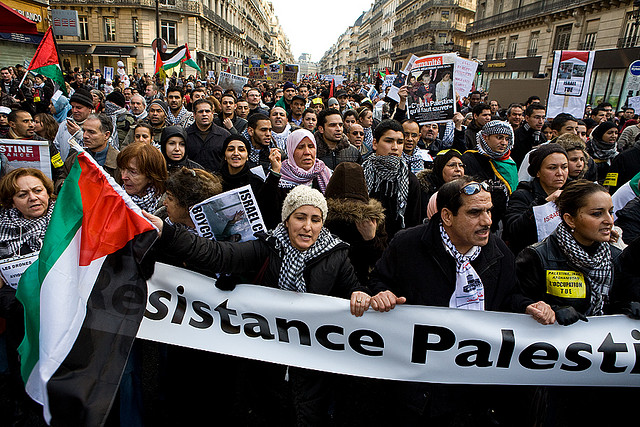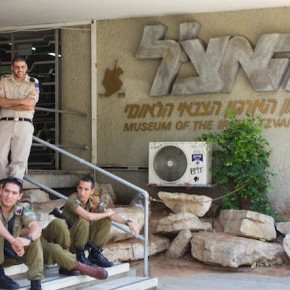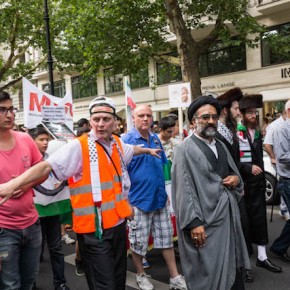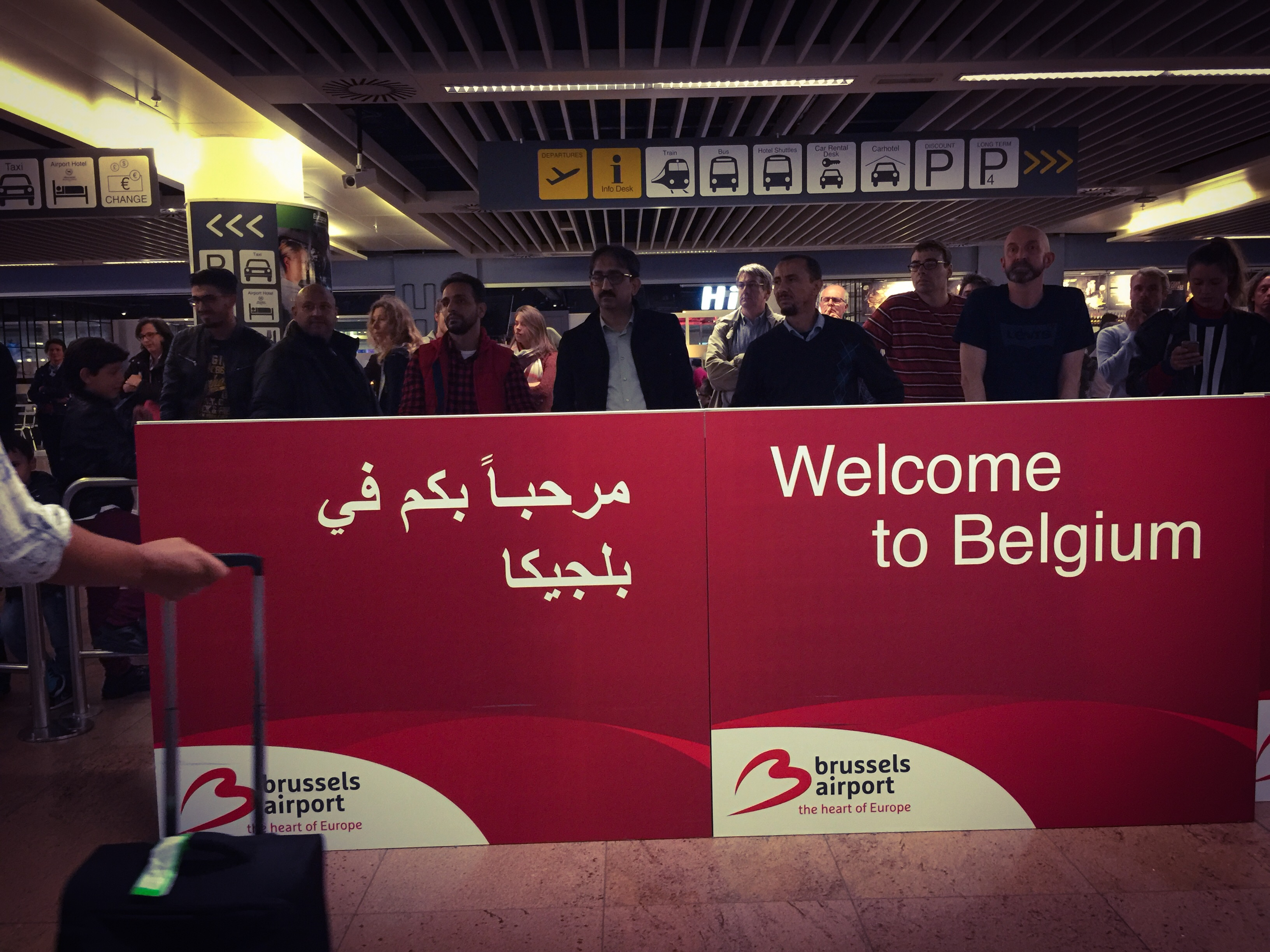On a warm summer night several years ago I found myself in a busy internet café on the Karl Marx Strasse in the Neukölln section of Berlin. Neukölln has one of the largest Turkish populations in the city, and rather a bad name both in Berlin, and in Germany more generally. In 2006, teachers from one of the local schools sent a letter to Klaus Börger, then Berlin’s education senator, in which they claimed that violence at the school was rampant, and that they feared for their own safety.
This was, all in all, not surprising. Neukölln is a depressed area, where jobs and other opportunities outside the black economy are rare. Still, it is hardly as grim as Bedford-Stuyvesant, or Compton, or even Hough, nor is it on the level of the French banlieues. In all the time I spent there I seldom felt any sort of threat, and it certainly didn’t betray the sorts of problems that British journalist Andrew Hussey describes in The French Intifada: The Long War Between France and Its Arabs.
Normally, I would have used the internet terminals at the corner store near my apartment on the Mainzerstrasse, but it was after 10 on a Saturday night, and I needed to get something sent on short notice. There are internet cafés all up and down Karl Marx Strasse, most often filled with young people surfing the web or video chatting with friends and relatives, and it took a bit of searching to find one with an open terminal. When I finally did, I ended up in a corner next two young guys flipping through webpages and chatting animatedly in Turkish. I didn’t catch all of what one of them said, but the part I did hear went, “…deutscher Pass, stolzer Kämpfer für Hamas” (“… German passport, proud warrior for Hamas.”) I smiled at him, hoping to defuse the tension, and he smiled wryly in return. I figured that if told him that I was American, not German, it probably wouldn’t improve the situation. Still, he had made his point. I took the hint and went on my way.
The problems of social and economic integration among Germany’s Turkish population are well known, but they pale before those of Muslims in France. It isn’t just the riots in the banlieues, and their spreading to the more central precincts of the Gare du Nord. There is also the cocktail of debates over the wearing of the veil, the failure to integrate French Muslims into the mainstream of society, and massive problems with crime and unemployment. All of this has created intense and intractable problems that have elbowed their way to the forefront of French public life. Hussey’s book is crucial, as it takes a longitudinal view of these problems, showing the ways that they are imbricated in the long history of French engagements in North Africa.
Beginning with the invasion of Algeria in 1830, a succession of French governments created complex and contradictory cultures from Tunis to Agadir, and beyond. While French colonial reach extended far beyond Tunisia, Algeria, and Morocco, the consequences of French conquests in central and west Africa were not nearly as profound. This had much to do with the differing ways that the French mission civilisatrice was put into practice. Unlike in sub-Saharan Africa, where the mission was barely more than a slogan, French rule in Algeria involved an attempt to totally integrate the country into the departmental structure of France. As Hussey shows in detail, the long sweep of French rule in Algeria created both a hybrid state that was caught between the pied-noir settlers and the complex already extant ethno-cultural formations that predated French rule.

More importantly, though, the close relationship that France sought to create with its North African possessions led to a counter flow of immigrants who headed to the metropole seeking avenues for economic improvement. What they found was a nation that, despite the rhetoric of liberty, brotherhood, and equality, was both deeply racist and deeply classist. The spatial orders that had dominated colonial North Africa were no less apparent in metropolitan France, and immigrants from Algeria, Morocco, and Tunisia were systematically shunted into marginal areas in which poverty and the effects of racial discrimination created their own negative solidarity.
Hussey’s narrative excels in its thoroughness, both in conveying the history, and in illustrating the divisions that colonial rule created within North African communities in Africa and France almost without distinction. France’s mission to civilize was, in practice, the project of creating a class of effective proxies to more effectively impose its will on the colonized peoples. These harki, as they came to be designated by those who abhorred them, were the original victims of the hybridization of French and North African cultures, having absorbed enough of the former to problematize their relationship to the latter, without creating the basis for their integration in the former.
But this was only the beginning of the crises of identity that would grow out of the French colonial project. In the wake of Algerian independence, achieved in the course of a conflict that brutalized all involved, and nearly lead to a military coup in France, the increasing separation between France and its former North African possessions had the collateral effect of intensifying the cultural dislocation felt by populations of North African origin in France. They felt increasingly bitter against a French society that marginalized them, both figuratively and spatially in the tower blocks at the edges of French cities. Succeeding generations gave rise to a culture that was only at home in a land from the central reaches of whose culture they were systematically excluded and which, consequently, it abhorred.
It is a truism to note the Europe has an identity crisis. Actually, it has a number of them. Identities are always fluid, hybridizations of personal experiences and the class, gender, and cultural narratives that structure human consciousness. There is no easily identifiable European identity. That much is clear from the abundant recent literature on the cultural and political problems of European integration. Nor are there (pace the overheated claims of various rightwing figures and their partisans) clearly definable national identities.

Identity in the Eurozone amounts to more or less widely held beliefs and commitments shaped by class, gender, and history, which shape the orientations of groups and individuals to institutions of the locality, state, and the zone more generally. Efforts toward social integration in industrialized democracies, whether undertaken by the state or in the broader realms of civil society, have as their goal the creation of widespread (if never universal) consensus on the legitimacy of the political and economic order. It simultaneously grounds the state’s monopoly on legitimate violence in wider social approval, with the additional effect of (at least ideally) minimizing the need for its employment.
This much has been clear for decades. Since the 1960s, when the concept of ungovernability worked its way into the political lexicon of both the left and the right, the question of the continued viability of such a (predominantly) consensual order has been a matter of debate. But if the disturbances of the 1968 seemed to pose this question in pointed fashion, the aftermath provided more hopeful indications, at least from the perspective of the forces of order. 1968 saw a reassertion of the Cold War narrative, as well as a disintegration of the organized left that, to one degree or another, took place across the industrialized democracies. One major element of this process was a shift from class to identity-based politics which, among other effects, intensified the coalescing of outsider French identity in the banlieues.
Living in areas of extreme poverty and social exclusion, youth (and others) in the banlieues created their own oppositional narratives, simultaneously French and anti-French. These narratives have become imbricated with broader themes of opposition to the imperialism of the industrial democracies, blending fundamentalist Islam and the political concerns of the Jihadist movements. The consequences of this fusing of identity narratives, as Hussey shows, have been profound. The already existing anti-French animus in the banlieues has been leavened with an intense antisemitism that has formed the basis of a number of horrific crimes in the last several years. The valorization of the perpetrators has only served to reinforce the intensity with which the outsider French narrative has shaped lives and identities on the margins of French cities. At the same time, the largest element of the response by the French government has been through the carceral system, leading to what appears to some as a further intensification of the conflict. Finally, there have been feedback effects in the realm of insider society as the National Front has capitalized on the resentment against both immigrants, and those enmeshed in the outsider culture, to bank some alarming electoral gains.
Perhaps the greatest virtue of Hussey’s book is the historical context that he provides, allowing the reader to form a more nuanced impression of the polarization of French society. But it is one thing to explain this polarization and yet another to address it in any substantive way. The outsider culture is built not only on history, but also on a synergetic relationship between economic and cultural exclusion, and a Jihadist imaginary which grounds its strength in a consideration of Islam that was forged in struggles against colonialism and authoritarianism.
The result is a large and growing population whose identity narratives preclude integration into the legitimating consensuses of French society. This leaves a number of issues unclear, not the least of which is whether the social and political conflicts generated by these narratives can be resolved within the context of the existing system. Another question is: will the growth of this culture cause further turbulence, that will further intensify the polarization of the French polity in ways that facilitate the rightward drift? The project of unraveling the outsider consciousness seems, at this point, to be one to which neither French institutions nor French civil society are able to undertake.
Photographs courtesy of looking4poetry and Gonzale. Published under a Creative Commons License.





